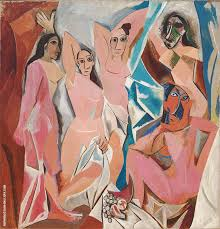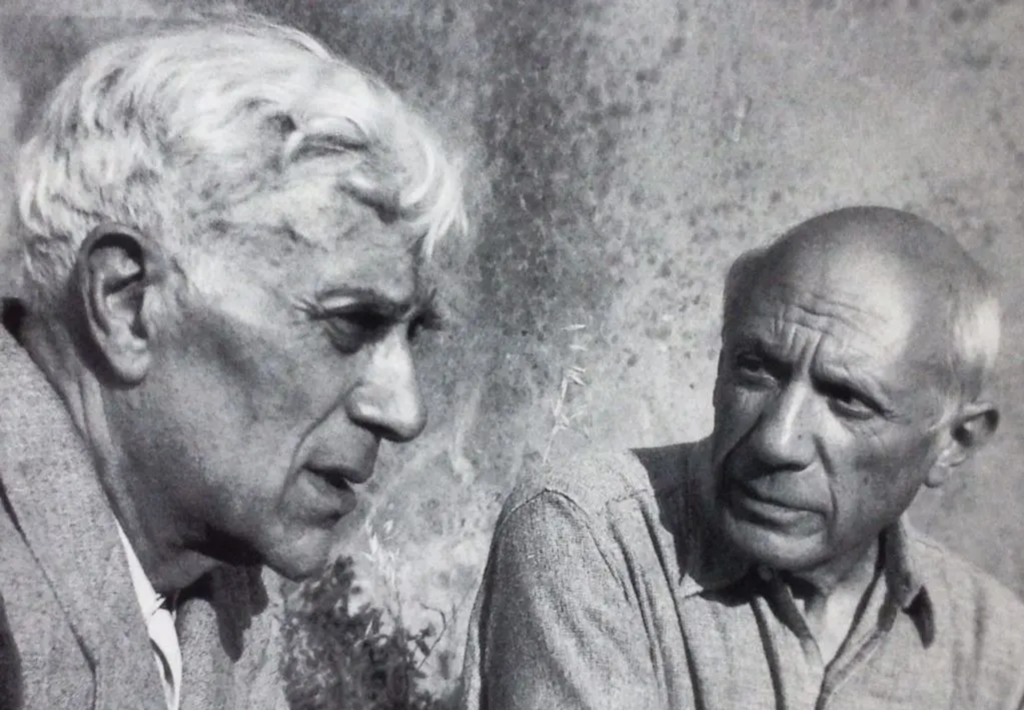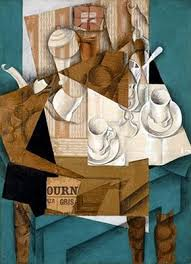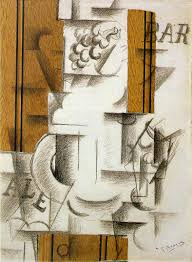What is cubism?
Cubism is an artistic movement lead by Pablo Picasso and Georges Braque. Cubism focuses on geometric shapes being used to depict humans and other forms. Overtime the geometric aspects became so intense that they sometimes overtook the represented forms, creating a more pure level of visual abstraction. Though the movements prime era was in the early 20th century, the ideas and techniques have continued to grow and are used to inspire works created today.
Pablo Picasso
Pablo Picasso (1881-1973) was a Spanish painter and sculptor, and is well known for his involvement in the Cubism movement. Picasso is seen as one of the most influential artists in the 20th century, with his ability to produce works in a wide-range of styles made him well respected within his lifetime. After his death his value as an artist and inspiration to other artists has only grown. Picasso is without a doubt going to be referred to as one of the greatest artists of all time.


Picasso’s most famous painting is Guernica, a large 1937 oil painting. It is regarded as one of his best-known works. Art critics have described it as the most moving and powerful anti-war paintings in history.
Georges Braque
Georges Braque (1882-1963) was a major French painter. He is mainly known for working alongside Picasso to create the cubist movement. Braque was not only a painter but he also created collages. Braque’s cubism pieces were based off of landscapes, These paintings were scenes which were distilled into basic shapes and colours and they inspired the French art critic Louis Vauxcelles to coin the term cubism, by describing Braque’s work as “Bizarreries cubiques”.


Houses at l’Estaque is an oil-on-canvas painting by Braque executed in 1908. It is though to be a highly important Photo-cubist landscape, it may even be the first one.
The First Era Of Cubism
Pablo Picasso and Georges Braque first met in 1905, but it wasn’t until 1907 that Picasso showed Braque what is considered the first Cubist painting, Les Demoiselles d’Avignon. This portrait depicts five women and draws heavy influence from African tribal art, which Picasso had recently been exposed to at the Palais du Trocadéro, a Paris ethnographic museum.

This piece went against every rule of tradition Western painting and was a huge leap from his previous blue and pin periods, which were far more representational and emotional. Due to this Picasso was hesitant to display this work to the public and it went unseen until 1916.
Braque, who painted in the Fauvist movement, was both repelled and intrigued by the painting. Picasso worked with him privately on the implications of the piece, developing together the Cubist form. Braque is the only artist to ever collaborate with Picasso, and over a period of two years, they spent every evening together, with neither artist pronouncing a finished work until agreed on by the other.

Braque’s response to Picasso’s initial work was his 1908 painting Large Nude, noted for incorporating the techniques of Paul Cézanne as an influence. This painting kickstarted the first era of Cubism, known as Analytical Cubism, which was defined by depictions of a subject from multiple points of view at once, creating a fractured, multi-dimensional effect expressed through a limited palette of colors.

The term Cubism was first used by French critic Louis Vauxcelles in 1908 to describe Braque’s landscape paintings. Painter Henri Matisse had previously described them to Vauxcelles as looking comprised of cubes. The term wasn’t widely used until the press adopted it to describe the style in 1911.
In 1909, Picasso and Braque decided to move their focus from humans to objects to keep Cubism fresh, starting with Braque’s Violin and Palette.

Others Join the Cubist Movement
As the movement grew wider in popularity others joined in. Polish artist Louis Marcossis discovered Braque’s work during 1910, and his Cubist paintings are considered to have more of a human quality and lighter touch compared to other cubist painters work.

Spanish artist Juan Gris remained on the fringes of the movement until 1911. He distinguished himself by refusing to make the abstraction of the object more essential than the object itself. Cubism represents a significant proportion of his life’s work as he died during 1927.

The second era of Cubism
By 1912, Picasso and Braque had begun to incorporate words in their paintings, this evolved into collage which dominated the second era of cubism, this era was known as Synthetic Cubism. This phase also included flattening the subjects and brightening the colours.

Braque further experimented with collage, this led to his creation of the papier colle technique. This technique can be seen in Braques 1912 Fruit dish and Glass, a concoction of wallpaper placed within te gouache. The introduction of collage broadened the form’s colour palette further.

Sculptors also explored Cubist forms. For example the Russian artist Alexander Archipenko first publicly showed his pieces during 1910.

Orphic Cubism
Orphic cubism was an offshoot movement formed in 1913 by French painter Jacques Villon and his brother, sculptor Raymond Duchamp-Villon, this branch embraced even brighter hues and augmented abstraction.

Robert Delaunay is considered a primary representation of this wing, sharing similar architectural interests as Leger, which can be seen multiple times in his cubist depiction of the Eiffel Tower along with other notable Parisian structures.

Cubism: World war I and beyond
Cubism was effectively halted by world war I as a number of artists including Braque, Lhote, de la Fresnaye and Legar, got called up for duty. De la Fresnaye was discharged during 1917 due to tuberculosis however he never fully recovered, he attempted to continue making art but died during 1925.

By 1917, Picasso returned to his practice of injecting more realism into his paintings, though his refusal to be pinned down to one type of art meant that Cubism reappeared in some works over the years, such as The Three Musicians (1921) and The Weeping Woman (1937), a response to the Spanish civil war.

Cubist Influence
Although Cubism never regained its place as an organised force within the art world, it influenced future art movements such as Futurism and Abstract Expressionism. Cubism also influenced other forms such as literature, music, photography, film, and graphic design.
How will cubism influence my project?
I will be studying the photographer Mandy Barker, who creates collages by combining photos of litter which she has found from beaches across the world. This links to cubism as it is the idea of combining different things to create a new thing, a collage.
